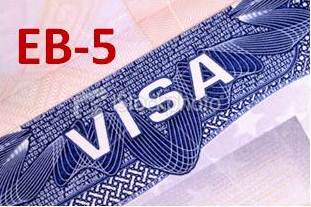A very short window has opened for potential EB-5 investors to invest at the $500,000 level once again after various events affecting the EB-5 industry occurred this past week; On Tuesday, a Federal Judge invalidated the Final EB-5 rules that increased the minimum investment amount from $500,000 to $900,000 in 2019, effectively reverting the investment threshold back to its previous level. On Thursday, however, efforts to re-authorize the EB-5 program, which is currently set to expire on the 30th of June 2021, stalled on the Senate floor and will only continue once Congress returns from its 4th of July recess. This leaves potential investors with the opportunity to invest at the $500,000 level only until the 30th of June.
U.S. Magistrate Judge Jacqueline Scott Corley gave hope to the EB-5 industry, which has been struggling under the twofold setback of increased investment amounts and investor uncertainty following the Covid-19 pandemic. Her ruling concluded that the Department of Homeland Security officials who were responsible for enacting the initial price increase and various other changes to the program through the Modernization Rule of 2019 had not been legally appointed according to the Federal Vacancies Reform Act of 1998 and therefore had no legal authority to promulgate the changes. Brought before the court by Behring Co., a real estate developer and the operator of Behring Regional Center, the judge’s decision effectively nullified the Modernization Rule enacted since November 2019. In addition to the increasing the investment threshold, the Modernization Rule also made changes to the Regional Center Program’s Targeted Employment Area (TEA) designation process, which removed States’ ability to determine their own TEA eligibility and drastically decreased the number of investments projects that qualified to raise capital through the EB-5 program.
The victory was short-lived, however, after efforts to reauthorize the EB-5 program stalled in the Senate’s last session before breaking for recess until after the 4th of July. Senators Grassley, Leahy and Cornyn brought the bipartisan EB-5 Reform and Integrity Bill before the Senate floor to request unanimous consent to pass the bill before the June 30thdeadline. The motion was, however, unsuccessful after South Carolina Senator Lindsey Graham registered an objection to the unanimous consent motion. A short- term extension was unfortunately not brought forward to re-authorize the program while effort to conclude any legislation action continues. This leaves the regional center to sunset until Congress gets back to work following the 4th of July holiday.
Industry experts believe that efforts to pass legislative reform and re-authorize the program will continue once Congress reconvenes. However, any legislative action taken will likely re-establish the $900,000 threshold and any action taken by Congress will supersede the ruling of the Behring case. Those who are considering making use of the small window of opportunity are encouraged to act before 30 June if they wish to partake in the program at the $500,000 level. It is possible the Government will appeal the decision and the ruling stayed meaning people who do invest $500,000 may have to now invest an additional $400,000 or depending on the terms of the regional center agreement have their $500,000 returned to them. It is important to review the specific regional center agreement to see what will happen to the $500,000 investment if the decision is appealed before June 30, 2021 and the investor has invested at the $500,000 level.
The EB-5 program provides its investors with legal permanent residents for the applicant, their spouse and any children aged under twenty-one years of age.
Read More












